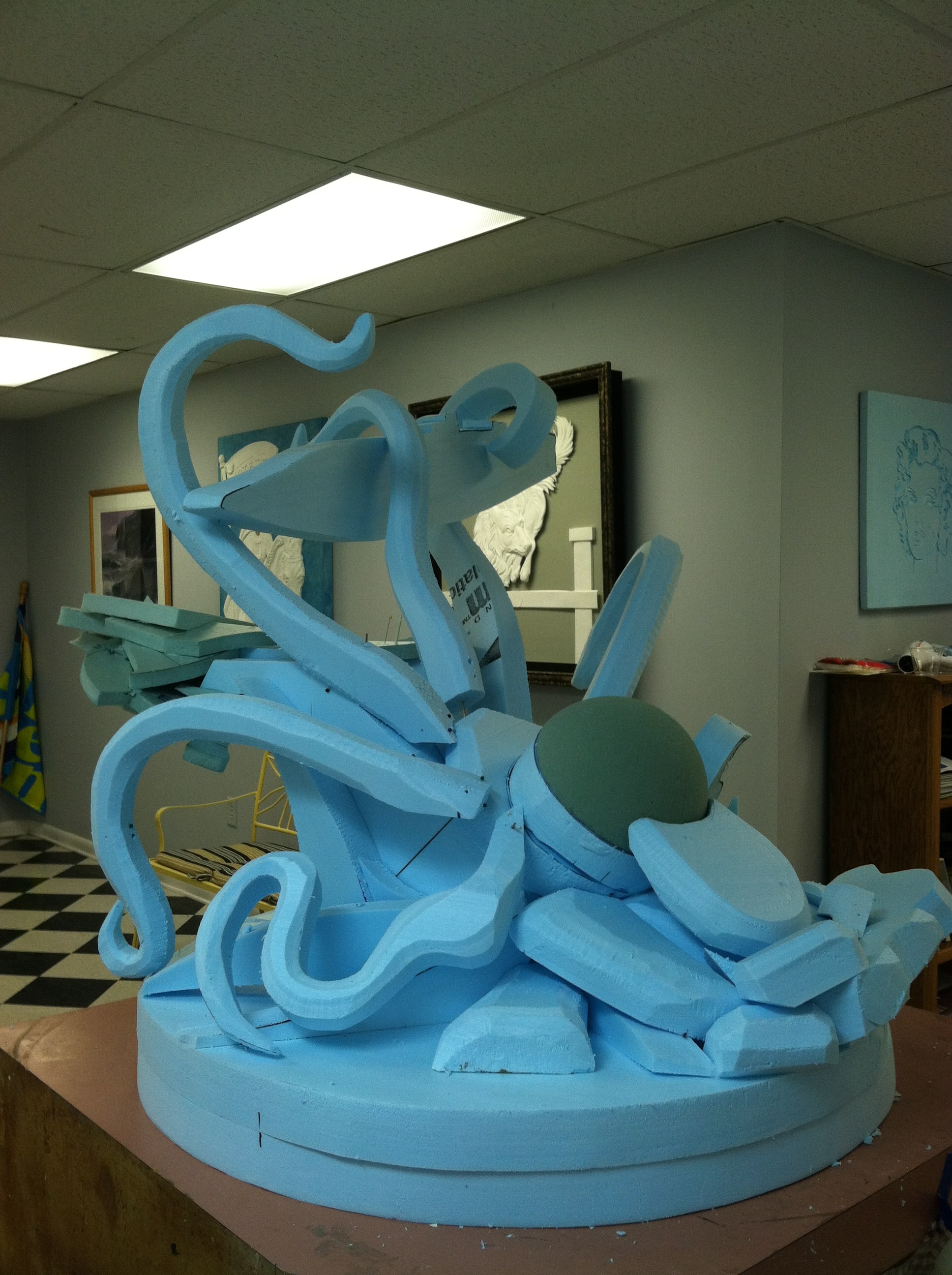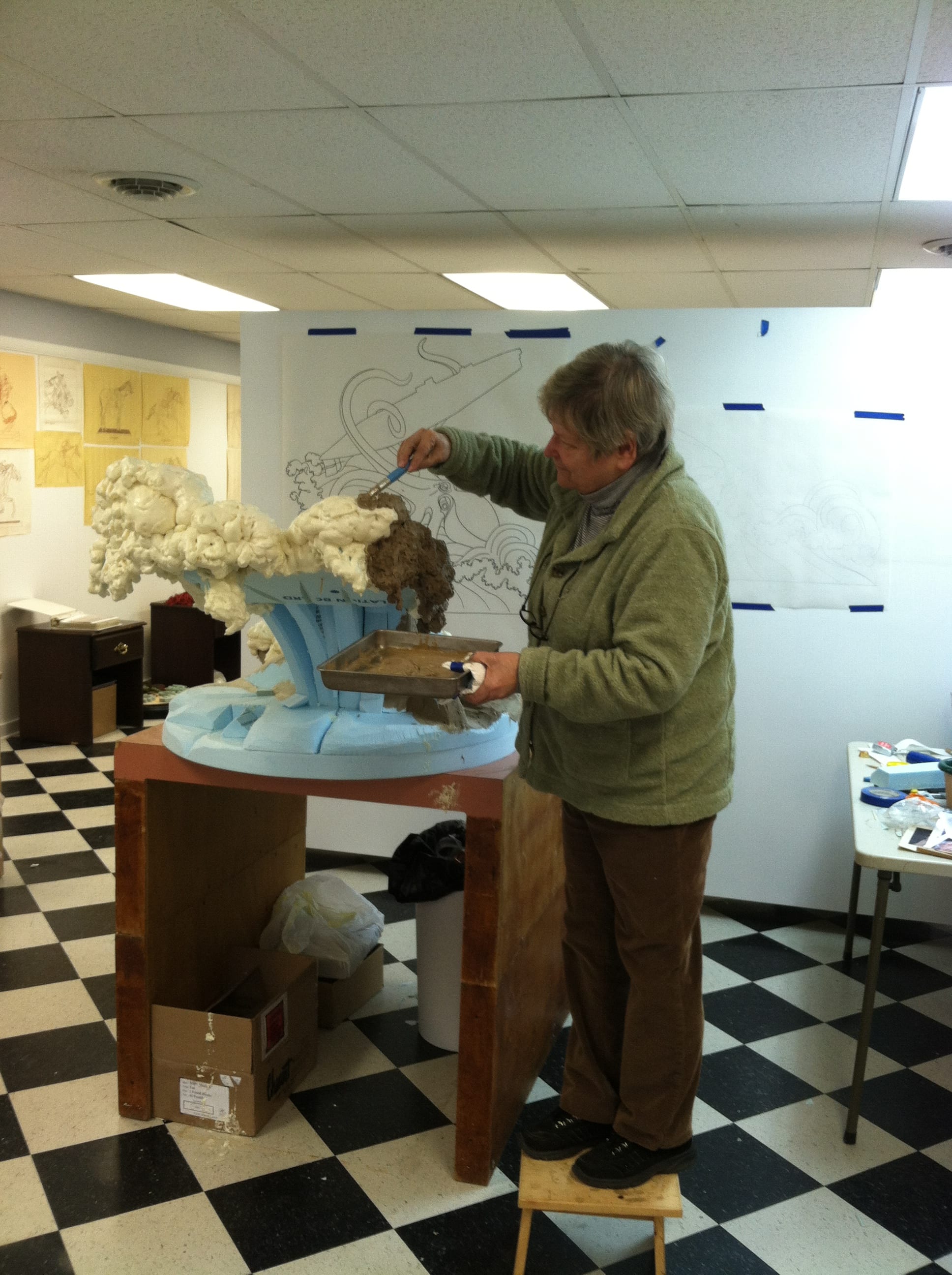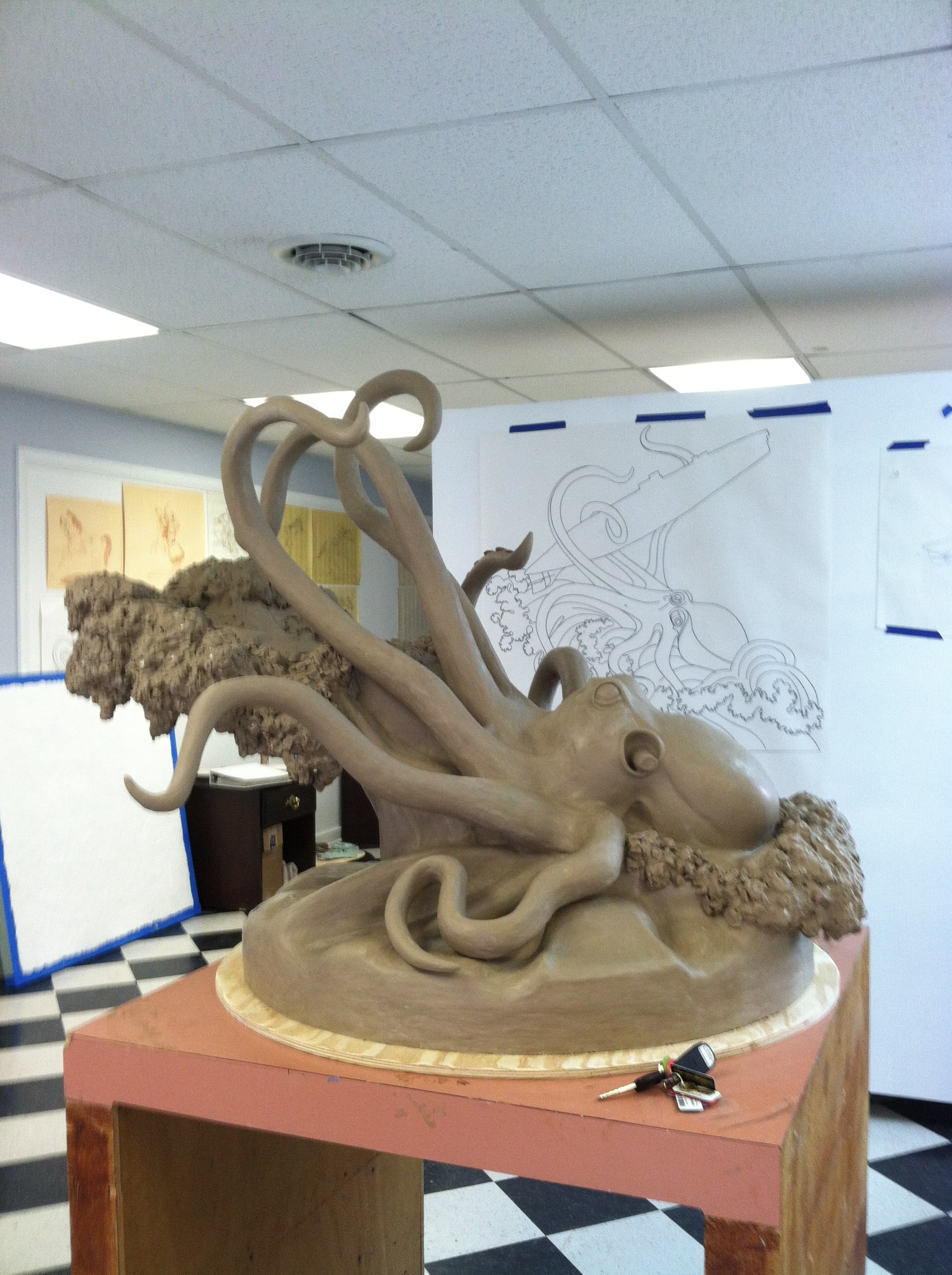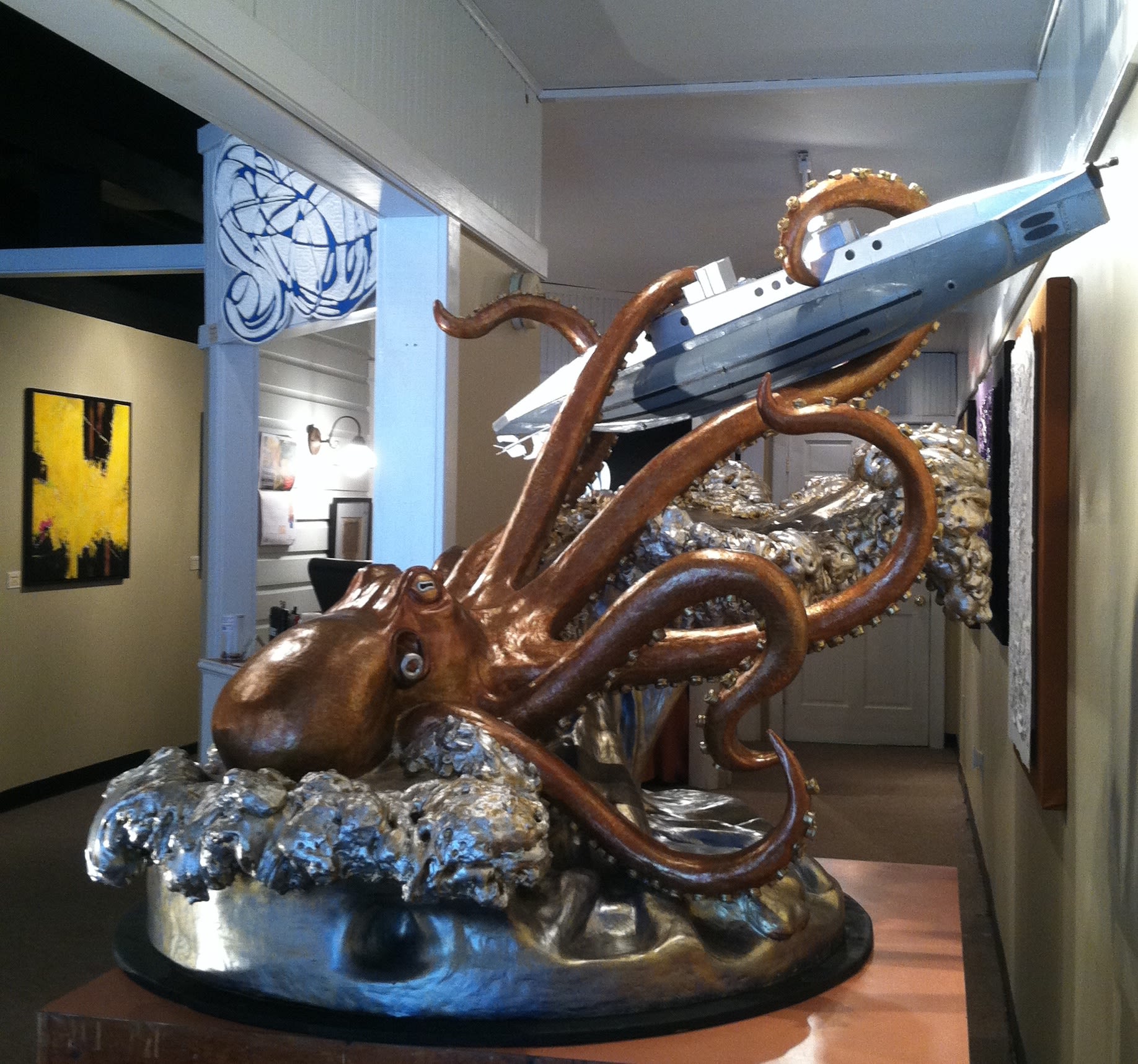The Art of Creating a Sculpture

Curious about how one goes about creating a sculpture? Over the next several blog posts I will be sharing with you the process of how I go about creating a sculpture. I’ll do that by sharing the story behind the sculpture I am creating along with the materials and techniques I use to bring a sculpture to fruition.
The story behind my sculpture The Nautilus was inspired by a truly remarkable man I met in the early 1960’s named, Isaac “Ike” Schlossbach. Born in 1891, Ike was a graduate of the U.S. Naval Academy Class of 1913. During his illustrious career would: serve as an officer on a submarine in World War 1, a naval aviation pioneer leading the first carrier based squadron on the first aircraft carrier USS Langley, serve as Admiral Richard Byrd’s pilot on every Antarctic Expedition, serve as a navigator on the submarine Nautilus on Sir Hubert Wilkin’s attempt to reach the North Pole by sailing under the polar icecap, and last, but not least, rejoining the US Navy during World War to supervise the construction of vital airfields in Greenland and Guadalcanal.
It was Ike’s serving as a navigator on the submarine Nautilus with the 1931 Wilkens Expedition to the North Pole that provided my inspiration to create a sculpture that would honor Ike’s memory and his enormous contribution to the Nation.
Now perhaps you’re wondering why I chose to create a sculpture of an Octopus grasping a submarine in its tentacles to tell the story of the Wilkens expedition. Please allow me to explain. The Octopus serves as a metaphor for the financial backer of the expedition, the publisher William Randolph Hearst. It was largely because of Hearst’ tight fistedness and unrealistic deadlines that would ultimately doom the Wilkens Expedition. Yes, the Nautilus never did reach the North Pole, though it did manage to travel some 50 miles under the Polar icecap before a mechanical failure brought the voyage and expedition to an end.
If you would like to know more about the Nautilus and the Wilkens Expedition, I would encourage you to visit the American Philosophical Society’s website.
There is also this wonderful documentary currently available on YouTube.
The first step in creating my Nautilus sculpture was drawing my conception of an Octopus sculpture. Once the drawing was complete, I began cutting, shaping, and assembling an armature of the Octopus from large sheets of Styrofoam. The armature is much like a skeleton, taking on the general form of an Octopus, without its muscular structure and anatomical details.

Once I’ve completed the construction of the armature the next step is to add the muscular structure and anatomical details by applying clay to the armature, modeling the clay to provide muscle and anatomical details. In addition to the clay, I also used an insulation foam spray to create the foam surface of the sea surrounding the octopus.


I created the Nautilus (octopus) model planning to ultimately cast it in bronze. I generally don’t paint completed models that are going to be cast, but I did with the Nautilus to give people an idea of how the sculpture would look in bronze. My Nautilus sculpture is ready for immediate casting. It measures approximately 38” high by 40” long by 37” wide, and can, if need be, easily be enlarged to a monumental size sculpture. Please give me a call if you would like further details.

Get In Touch
If you have any questions regarding my work—such as availability, pricing, or where to see it—please fill out the form below. I look forward to hearing from you.
